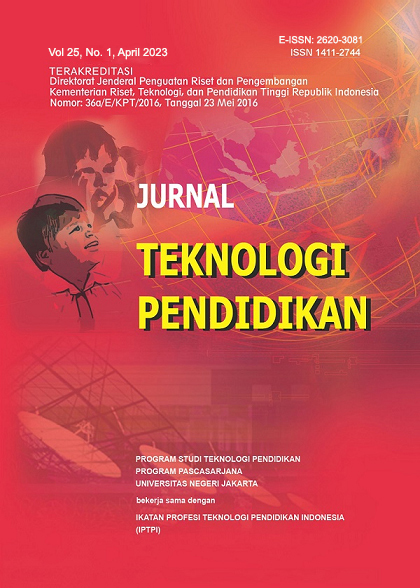Effectiveness of Implementing Synchronous and Asynchronous Blended E-Learning in Stunting Prevention and Treatment Training Programs
DOI:
https://doi.org/10.21009/jtp.v25i1.34951Keywords:
syncronous and asyncronous learning, training program, blended learningAbstract
The Covid 19 pandemic has had such a big impact on the education system, especially the National education system. In the conditions of the Covid 19 pandemic, national learning is carried out online, both formal and non-formal education (training). Related to this, the authors conducted a study on the application of asynchronous and synchronous blended learning in Stunting Prevention and Handling Training held at the Ministry of Social education and training institutions. The purpose of this study is to find out the effectiveness and constraints of implementing asynchronous blended learning and synchronous training. The method used in this study is a literature study. The results of the study show that the implementation of asynchronous and synchronous blended online learning Training on Stunting Prevention and Handling is not yet effective. This is due to the asynchronous setting being carried out only with independent asynchronous (AM) without the presence of a facilitator. The existence of a facilitator can play an important role in maintaining and maintaining the level of student learning motivation and facilitating relationships between training participants and with the facilitator. Then in the implementation of synchronous online learning Training on Stunting Prevention and Handling is also considered less effective. The main obstacle is the internet network which is not accessible to participants, especially from remote areas. So that it is very difficult for participants to follow synchronous learning as a whole.
References
of Online Learning. Second Edition. Published by AU Press, Athabasca University. p.17.
Chaeruman. (2019). PANDUAN MEMILIH DAN MENENTUKAN SETING BELAJAR DALAM MERANCANG PEMBELAJARAN BLENDED,
Clark, R. C. & Mayer, R. E. (2003). E-learning and the science of instruction. San Francisco: Jossey –Bass/Pfeiffer
Haythornthwaite & Kazmer. (2002). Bringing The Internet Home: Adult Distance Learners and Their Internet, Home, and Work Worlds. Vancouver: University of British Columbia. p. 459
Hrastinski, S. (2008). A Study of Asynchronous and Synchronous e-learning Methods Discovered That Each Support Different Purposes. Educauses Quarterly, Vol. 4, 51-55
Kemensos dan Tanoto Foudation (2021) Pedoman Pelatihan Pencegahan dan Penanganan Stunting https://kemensos.go.id/uploads/topics/16502536758589.pdf hlm. 14
Littlejohn, A., & Pegler, C. (2007). Preparing for blended e-learning. New York: Routledge.
Mestika Zed, Metode Penelitian Kepustakaan, (Jakarta: Yayasan Obor Indonesia, 2004)
Noe, R. (2002). Employee Training and Development (2nd ed.). New York: McGraw-Hill.
Noirid, S. “E-learning Models: A Review of Literature”. The 1st International Conference on Educational Reform November 9-11, 2007, (Bangkok, Thailand: Mahasarakham University, p. 3.
Piskurich, George M. (2006). Rapid Instructional Design. Second Edition. Published by Pfeiffer San Francisco,Harun., Kartowagiran, B., & Manaf, A. (2021). Student attitude and mathematics learning success: A meta-analysis. International Journal of Instruction, 14(4), 209-222. https://doi.org/10.29333/iji.2021.14413a
Downloads
Published
How to Cite
Issue
Section
License
Jurnal Teknologi Pendidikan is an Open Access Journal. The authors who publish the manuscript in Jurnal Teknologi Pendidikan agree to the following terms.
Attribution-ShareAlike 4.0 International (CC BY-SA 4.0)
-
Attribution — You must give appropriate credit, provide a link to the license, and indicate if changes were made. You may do so in any reasonable manner, but not in any way that suggests the licensor endorses you or your use.
-
ShareAlike — If you remix, transform, or build upon the material, you must distribute your contributions under the same license as the original.
- No additional restrictions — You may not apply legal terms or technological measures that legally restrict others from doing anything the license permits.
Notices:
- You do not have to comply with the license for elements of the material in the public domain or where your use is permitted by an applicable exception or limitation.
- No warranties are given. The license may not give you all of the permissions necessary for your intended use. For example, other rights such as publicity, privacy, or moral rights may limit how you use the material.








